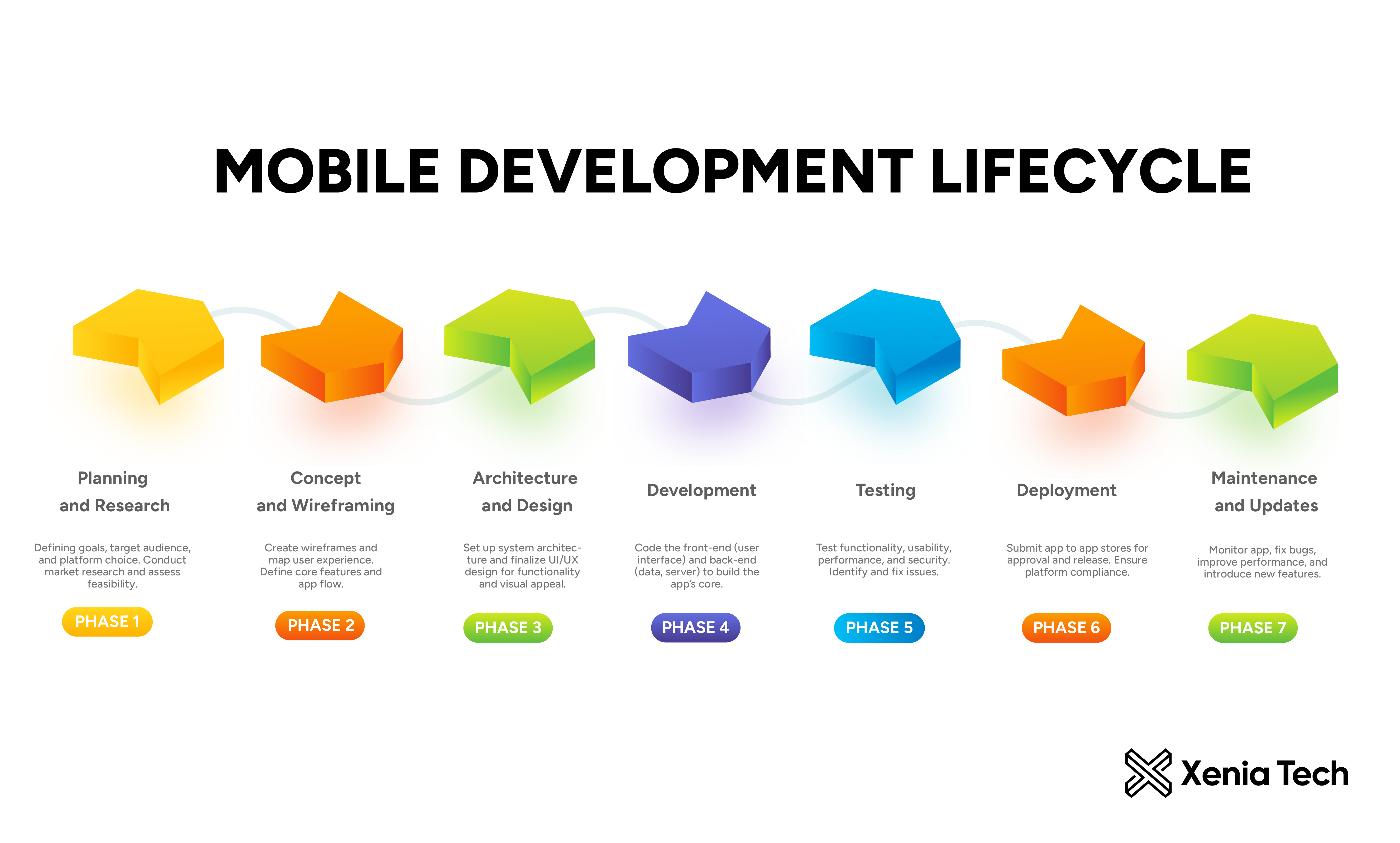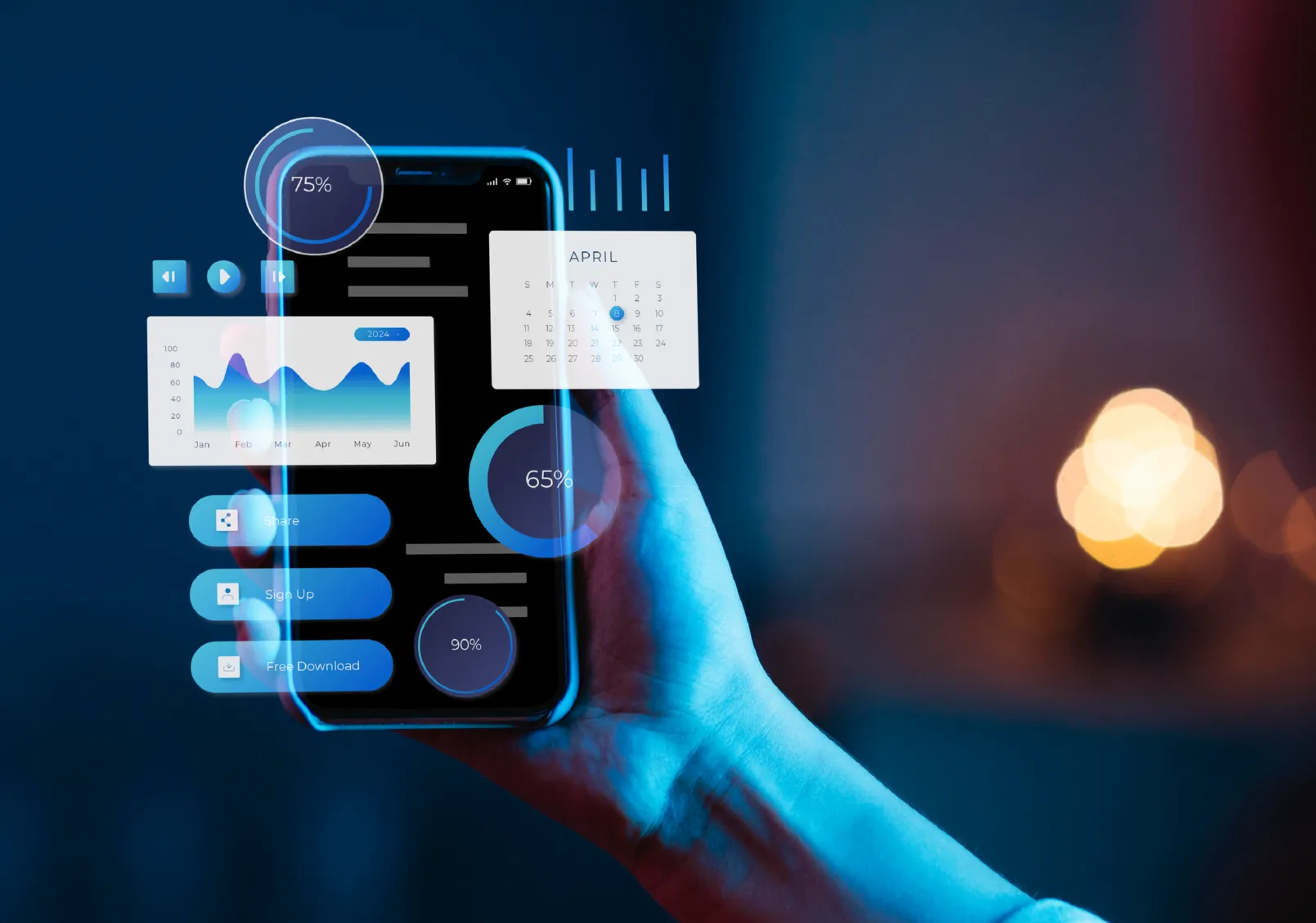Mobile applications have become ubiquitous in our world. Have significantly impacted how we interact with others and engage in online shopping and professional tasks as well. On average people dedicate about 1 to 3 hours daily to exploring types of apps. Given this trend, it comes as no surprise that numerous companies are keen to venture into creating their mobile applications. However prior, to embarking on the development journey, it is essential to grasp the intricacies of the mobile app development lifecycle. This systematic approach delineates the required stages for crafting an application from inception to completion.
Let’s analyze each stage and explore their connections.
Planning and Research: Laying the Foundation
The first phase of the mobile development lifecycle is all about research and planning. This is where you gather information, identify your target audience, and understand what they want from your app. A deep dive into market research will help you figure out how your app can stand out.
Next, it’s essential to set clear goals. What problems will your app solve? What features will it need? These answers will guide the entire development process. Additionally, you’ll need to choose whether your app will be for iOS, Android, or both. This decision should be based on your target users.
Finally, consider the technical and financial feasibility. It’s crucial to know if your idea can be realistically developed within your budget and timeline. The planning phase might seem overwhelming, but a well-established mobile app strategy will be the core of a successful application.
Concept and Wireframing: Turning Ideas into Visuals
Once the research is complete, the next step in the mobile development lifecycle is to create a concept and wireframes. This involves visualizing how your app will function and look.
Wireframes are essentially blueprints for your app. They help you map out the user experience (UX) by showing how users will navigate through the app. You’ll want to sketch out each screen, focusing on making the app user-friendly.
During this stage, you also start deciding on core features. You should prioritize these features and plan for future updates as well. By visualizing everything early, you avoid misunderstandings later in the development process.
Technical Architecture and Design: Laying the Groundwork
In this stage of the mobile development lifecycle, you begin building the technical side of the app. Technical architecture is where developers decide on the system’s structure and ensure it can handle large numbers of users.
UI/UX designers also step in to create the final look of the app. While wireframes provide the blueprint, this is where the app’s design truly comes to life. Visual design elements like icons, colors, and typography are decided upon here, ensuring the app is both functional and visually appealing.
Once the architecture and design are complete, your team is ready to start coding.
Development: Bringing Your App to Life
The development phase of the mobile development lifecycle is where coding begins. This is split into two parts: front-end and back-end development.
Front-End Development: This involves everything the user interacts with, from buttons to content. Developers work on the app’s user interface and ensure it functions smoothly.
Back-End Development: The back-end handles data, security, and functionality behind the scenes. It ensures the app communicates with servers and databases.
Together, the front-end and back-end form the core of your mobile app. By the end of this stage, you should have a working prototype.
Testing: Ensuring Quality and Performance
Once the app is built, the next step in the mobile development lifecycle is testing. Testing ensures your app works without glitches and offers a great user experience.
Various types of testing are done, including functional, usability, and performance testing. Functional testing checks if all features work as expected. Usability testing ensures that users can navigate the app easily. Performance testing, on the other hand, focuses on the app’s speed and reliability under different conditions.
Don’t forget to beta-test your app by giving it to a small group of users. Their feedback can highlight areas of improvement before the final launch.
Deployment: Bringing Your App to the Market
Once testing is complete, it’s time to launch your app. The deployment phase of the mobile development lifecycle involves submitting your app to app stores, like Google Play or the App Store.
During this stage, you’ll need to ensure your app meets each platform’s guidelines. This includes making sure all features work properly, and that the app has a smooth user experience. After approval, your app will be available for download.
Remember, even after launch, your work isn’t over yet. You’ll need to monitor the app’s performance and prepare for future updates.
Maintenance and Updates: Continuous Growth
The final stage of the mobile development lifecycle is maintenance. After your app is launched, it’s crucial to keep it running smoothly. This includes fixing bugs, improving performance, and responding to user feedback.
- Bug Fixes and Performance Optimization: Regular updates are essential to ensure your app remains functional and competitive.
- New Features and Improvements: As your app grows, you’ll likely introduce new features based on user needs. Keeping up with trends and updates will help your app stay relevant in the fast-paced mobile world.
A Continuous Journey

The mobile development lifecycle is a continuous process. It starts with planning and research, but even after your app is live, it’s important to keep improving and adapting. By understanding each phase, you can ensure your app is not only built well but continues to succeed long after its initial release.




